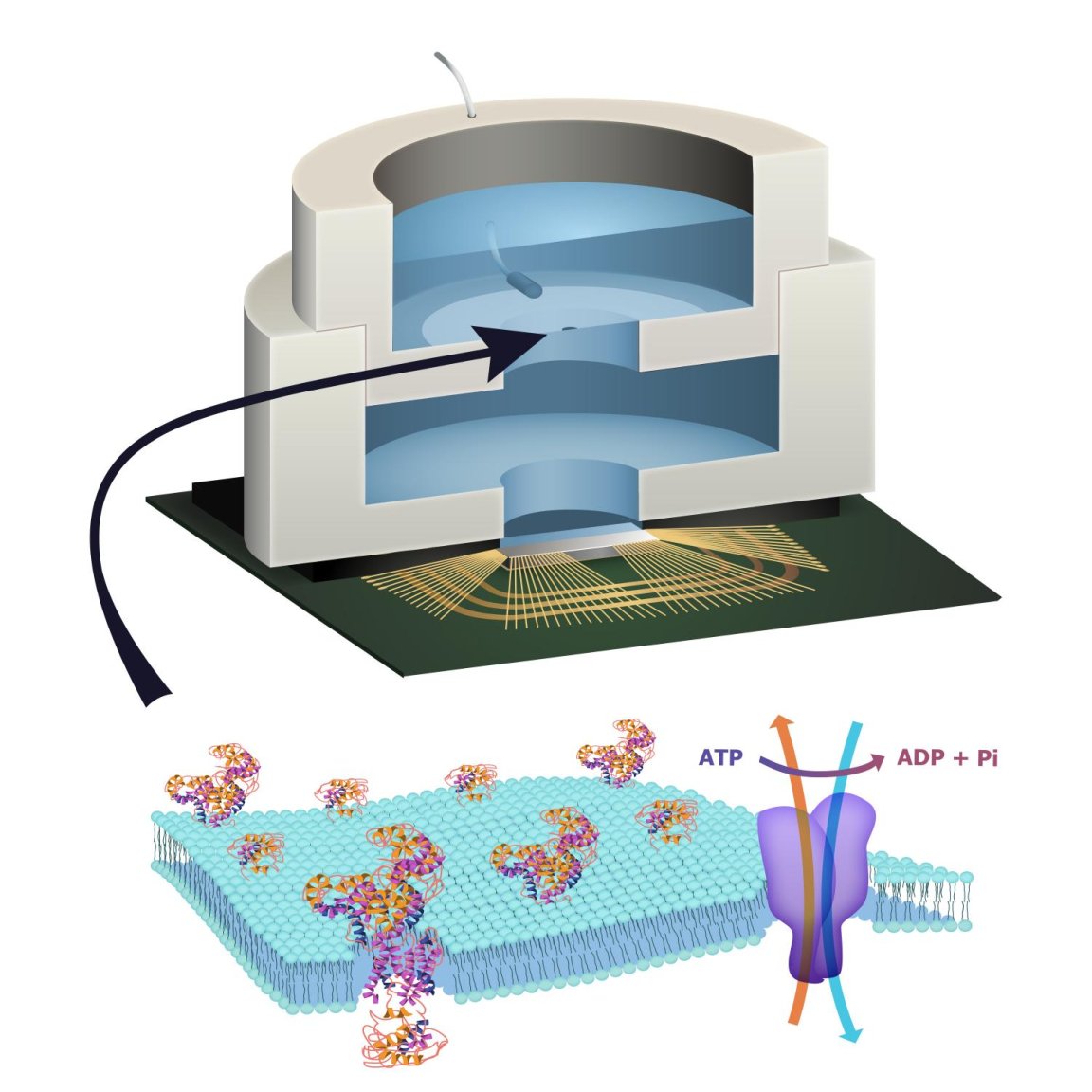
What It Is
There’s a new way to blend the biological with the robotic, thanks to advancements made by a team at Columbia.
Recently, Columbia Engineering researchers took a integrated circuit (specifically, a conventional solid-state complementary metal-oxide-semiconductor) and combined it with an artificial lipid bilayer membrane containing adenosine triphosphate (ATP)-powered ion pumps. Ultimately, this combination makes it possible to create new artificial systems that contain biological and mechanical components.
“In combining a biological electronic device with CMOS, we will be able to create new systems not possible with either technology alone,” Ken Shepard, Lau Family Professor of Electrical Engineering and professor of biomedical engineering at Columbia Engineering, said in the press release.
He continues, “We are excited at the prospect of expanding the palette of active devices that will have new functions, such as harvesting energy from ATP, as was done here, or recognizing specific molecules, giving chips the potential to taste and smell.”
However, although there has been a breakthrough with these new findings, Shepard said that CMOS solid-state electronics do not have the ability to perform or replicate certain functions of living systems, such as tasting, smelling, and the use of biochemical energy sources yet.
Shepard notes that complementary metal-oxide-semiconductor (CMOS) solid-state electronics are incapable of replicating certain functions which to living cells comes naturally, such as the senses of taste and smell and the use of biochemical energy sources.

Living systems use lipid membranes and ion channels and pumps, which act as a kind of ‘biological transistor.’ Solid-state systems, on the other hand, use electrons. To build a prototype hybrid system, Shepard’s team packaged a CMOS integrated circuit (IC) with an ATP-harvesting ‘biocell.’
In order to ensure that the system would function properly, the team first made a macroscale version of it. This was at the scale of several millimeters. Shepard notes, “Our results provide new insight into a generalized circuit model, enabling us to determine the conditions to maximize the efficiency of harnessing chemical energy through the action of these ion pumps. We will now be looking at how to scale the system down.”
Its Implications
Shepard and his team are exploring how to isolate just the desired function and interfacing this with electronics. “You need a bomb-sniffing dog now, but if you can take just the part of the dog that is useful—the molecules that are doing the sensing—we wouldn’t need the whole animal,” says Shepard.
He continues by noting the potential uses of this development, “We are excited at the prospect of expanding the palette of active devices that will have new functions, such as harvesting energy from ATP, as was done here, or recognizing specific molecules, giving chips the potential to taste and smell. This was quite a unique new direction for us and it has great potential to give solid-state systems new capabilities with biological components.”